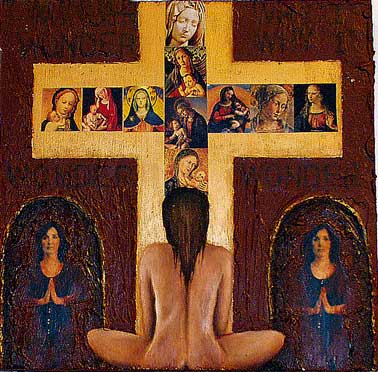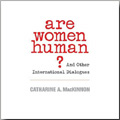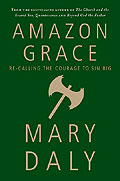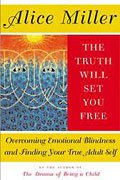On Tuesday, the United Nations issued a report collected from studies involving 71 countries:
Violence against women is "severe and pervasive" worldwide, with at least one in three women experiencing abuse by an intimate partner at some point in their lives...
Undersecretary-General for Economic and Social Affairs Ocampo called violence against women...
..."a pervasive phenomenon – it's really a global problem that has to be addressed."
"According to the quantitative estimates, which certainly underestimate the amount of violence that occurs, at least one out of three women experiences violence at some stage of their lives," he said. "The report states that the major form of violence takes place at the domestic level, in the households ... and it takes place in societies throughout the world."
In addition to spontaneous violence, the report also condemned what it found to be high levels of institutionalized violence, such as female circumcision, estimating that 130 million girls and women living today had undergone this practice.
Women are not receiving adequate protection from their governments, the report said, finding that 102 member states had no specific laws on domestic violence. The report also found that martial rape was not a prosecutable offense in at least 53 states, and only 93 have laws to prevent female trafficking.
Rachel Mayanja, the secretary-general's special adviser on gender issues, said the curtain has been raised on violence against women and it's now time to act in a coordinated way "to try and eliminate this scourge."
"We are going to try to end impunity — (ensure) that those who are violating women will be prosecuted, will be punished, and that none of them will be allowed to continue to prey on their women," she told the news conference. "This is the hope — that this study can galvanize this kind of action."
The report urged governments to take action to bridge the gap between international policy and national laws, including securing gender equality, gathering more data on violence against women and allocating more funding for its prevention.
Violence against women affects whole societies, the report said, citing the costs of treating women injured both physically and emotionally, the effect of the violence on children, the loss of employment productivity, and the cost of bringing perpetrators to justice.
Additionally, fearing abuse from a sexual partner, women don't get tested for HIV, don't divulge their HIV status, or seek medical treatment.
"We cannot make poverty history unless we make violence against women history," U.N. Population Fund Executive Director Thoraya Ahmed Obaid said in a statement.
In July, Martha Nussbaum at The Nation reviewed Catharine A. MacKinnon's book, Are Women Human?
In the two most deeply troubling articles in the collection, "Genocide's Sexuality" and "Women's September 11th," MacKinnon examines the internationally accepted definitions of genocide and terrorism, and argues that many acts of men against women meet one or both of these definitions. As defined under the UN convention on genocide, genocide is either killing or inflicting serious bodily or mental harm on members of a group, with intent to destroy that group either entirely or in part. The groups mentioned are "national, ethnical, racial, or religious" groups: So in that sense violence against women clearly doesn't qualify. On other grounds, however, one could argue that a great part of violence against women does involve a similar infliction of "serious harm" on women because they are women, and its aim can be said to be to destroy "in part"--for "destroy," if mental harm is sufficient for genocide, must mean not "kill" but "remove from the ranks of the fully human"--something that happens to women all the time.
We hear of post traumatic stress disorder and its usual association with soldiers of war but the most common PTSDs are those not of men in war, but of women in civilian life. Judith Herman, M.D., in her book, Trauma and Recovery, described the "domestic captivity" of women and children, "those subjected to totalitarian systems in sexual and domestic life, including survivors of domestic battering, childhood physical or sexual abuse, and organized sexual exploitation." A quick glance of domestic violence statistics... will confirm that the casualties of the private sphere rival those in the public sphere. I repeat MacKinnon's question, so why isn't this political?
The question begs an answer, doesn't it? Well, actually it demands solutions.
Here in America, Bonnie Erbe of U.S. News & World Report writes:
Right now there are 14 women in the U.S. Senate (five Republicans nine Democrats) and 67 in the U.S. House (24 Republicans and 4 Democrats.) As recently as 31 years ago, there were 19 women in th U.S. House and none in the Senate. That number has risen in each election–stubbornly molasseslike, according to some anxious observers (present company included), but risen nonetheless.
John Fortier, an American Enterprise Institute scholar writing in the Hill newspaper, says the current climate favors women. He writes: "Research shows that women do just as well as men in running as incumbents, challenging incumbents, and running for open seats. As more seats open up and as the number of women running for office increases, so inevitably does the number of women in Congress rise. According to the Center for American Women in Politics, there are 139 women running for the House on major-party tickets and 12 in the Senate, significantly up from 20 years ago. And as the National Council on State Legislatures reports, the pool of potential female candidates with political experience is deep, as women make up 22.6 percent of state legislatures."
Still, it's unclear whether this year will turn out to be another "Year of the Woman" in national politics. At least, things do not appear to be shaping up that way. While women may hold more seats in Congress, it could be just a handful more. The Hill, for example, projects a gain of one or two seats for women in the U.S. Senate and a pickup of six to 10 seats in the House. What's more, I've been hearing a lot about women securing major-party nominations to challenge other women in this political season, and I've wondered whether 2006 might be a record year for women in that regard. Sorry, nope, says the Center for American Women in Politics at Rutgers University. In 1998, 14 women ran against women (one in the Senate and 13 in the House). This year, there are 11 such woman vs. woman races–nine in the House and two in the Senate. So, unless there is a sudden turn of events, the pace of change will remain, well, stubbornly molasseslike.
Politically, more women must step up. It's too late for this year's election but all of us women need to keep the eye on the prize: Get women elected, support women running for office (except for the Republican Stepford Wives), and change the laws to abate violence against women.
IMAGES: Raise The Veil: Repent and Raise The Veil: Forbidden from artist Tricia Grame.![]() Digg this story
Digg this story

























|